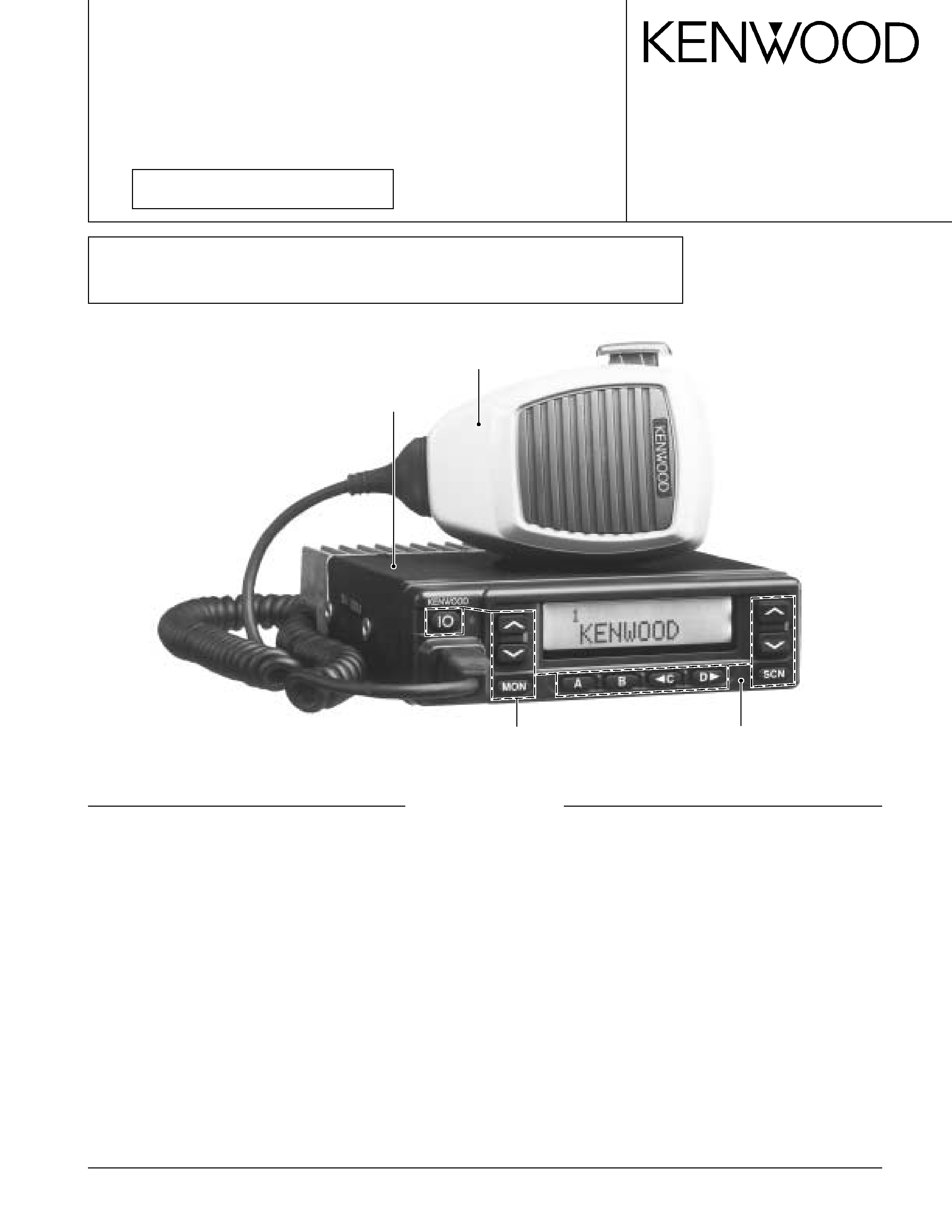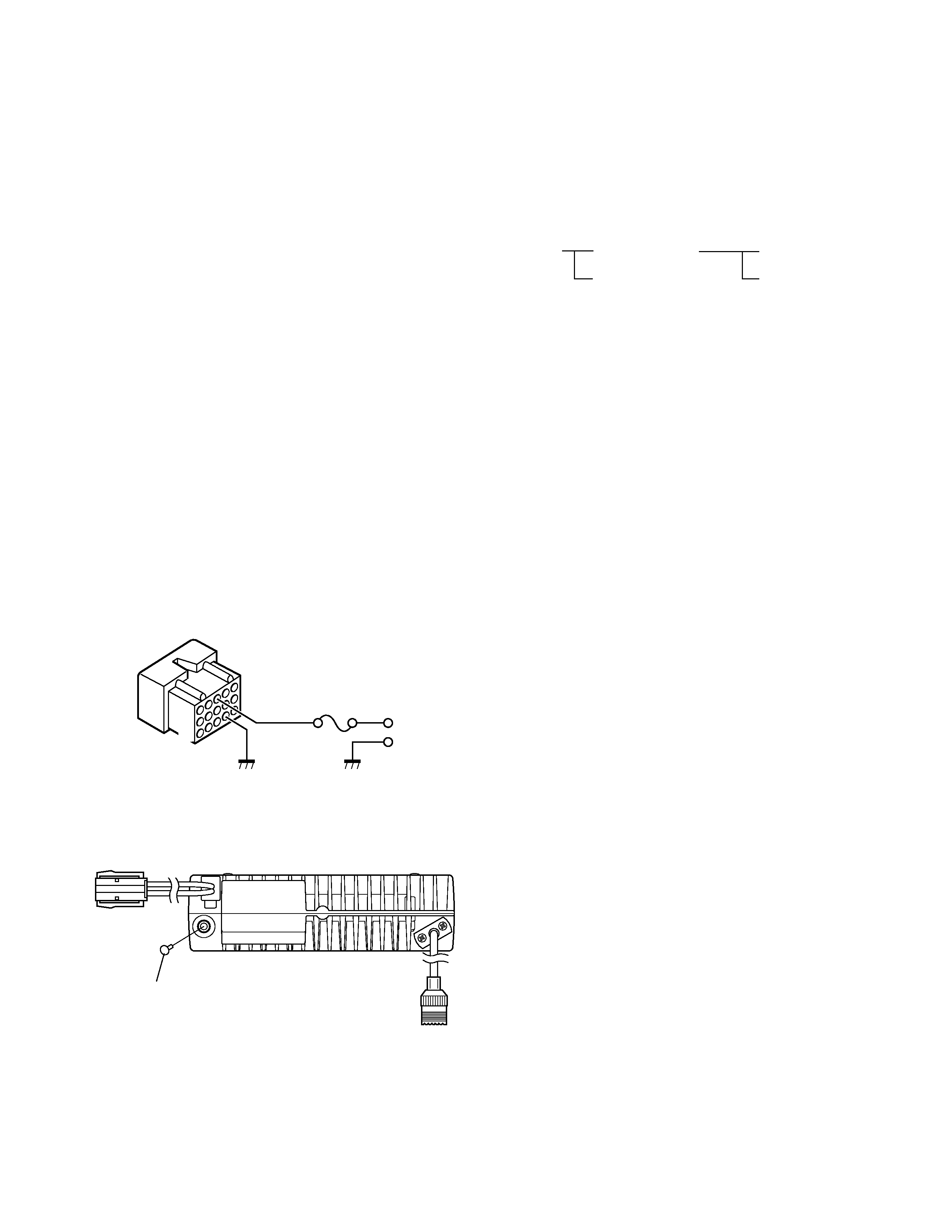
4
TK-780/H
2-2. Programmable Keys
The FPU (KPG-49D) enables programmable keys to se-
lect the following functions.
s Conventional format
AUX-A, AUX-B (Only when voice scrambler is not se-
lected), Channel down, Channel up, DTMF ID (BOT), DTMF
ID (EOT), Display character, Emergency (Only foot key),
Function, Group down, Group up, Home channel, Horn alert,
Key lock, Memory (RCL/STO), Memory (RCL), Memory
(STO), Monitor A, Monitor B, Monitor C, Monitor D, Opera-
tor selectable tone, Public address, Redial, Scan, Scan del/
add, Scrambler (Only when voice scrambler is selected),
Talk around, Volume down, Volume up and None.
s Trunking format
Auto tel, AUX-A, AUX-B (Only when voice scrambler is
not selected), DTMF ID (BOT), DTMF ID (EOT), Display char-
acter, Emergency (Only foot key), Function, Group down,
Group up, Home group, Horn alert, Key lock, Memory (RCL/
STO), Memory (RCL), Memory (STO), Monitor A, Monitor B,
Monitor C, Monitor D, Public address, Redial, Scan, Scan
del/add, Scan temporary delete, Scrambler (Only when
voice scrambler is selected), System down, System up, TEL
disconnect, Volume down, Volume up and None.
These functions the FPU programs to the function keys
and described in the following sections.
· Auto TEL (Trunking format)
Automatically connects available repeaters that are con-
nected to telephone circuits when operating as LTR system.
The time allocated to search for available repeaters is 60
seconds, after which connection failure occurs, a DTMF
tone is output and the function terminates.
If connection to an available circuit is made, only ID 253,
EOT or hang-up time-out can terminate the function.
· AUX-A
If this key is pressed, "AUX" icon lights on the LCD and
AUX port which is inside of the transceiver turns to the high
level. If pressed again, the "AUX" icon goes off and the
AUX ports turns to the lower level.
· AUX-B
This function can be programmed when the voice scram-
bler board is not installed.
If this key is pressed, an underscore ("_") appears at the
extreme right of the LCD and AUX port which is inside of the
transceiver turns to the active level. If pressed again, the
underscore disappears and the AUX ports turns to the
deactive level.
· Channel up/down (Conventional format)
When the key is pressed each time, the channel number
to be selected is incremented/decremented and repeats if
held for one second or longer. This key works as the voice
scrambler code selector in the voice scrambler code select
mode.
OPERATING FEATURES
· DTMF ID (BOT)
In conventional mode, if you press this key, a predeter-
mined DTMF ID (Begin of TX) will be sent automatically.
· DTMF ID (EOT)
In conventional mode, if you press this key, a predeter-
mined DTMF ID (End of TX) will be sent automatically.
· Display character
This key switches the LCD display between the system
and group number in trunking format and the group and
channel name in conventional format.
· Emergency
Pressing this key for longer than the programmed "Emer-
gency Key Delay Time" causes the transceiver to enter the
emergency mode. The transceiver jumps to the pro-
grammed "Emergency system and group in trunking format
and the group and channel in conventional format" and
transmits for the programmed "Active Time".
The transceiver disables mic mute while transmitting.
After finishing transmission, the transceiver receivers for
the programmed "Interval Time". The transceiver mutes
the speaker while receiving. Following the above sequence,
the transceiver continues to transmit and receive.
· Function
Pressing this key causes the transceiver to display
"FCN". Then, pressing a microphone DTMF key causes the
corresponding programmed function to start. This key may
be convenient when using many functions with the micro-
phone 12-key keypad.
· Group up/down
When the key is pressed each time, the group number to
be selected is incremented/decremented and repeats if held
for one second or longer.
· Home channel (Conventional format)
Press this key once, the channel switches to the pre-pro-
grammed home channel.
· Home group (Trunking format)
Each pressing of the key selects a preset system/group.
· Horn alert
If you are called from the base station using 2-tone/DTMF
while you are away from your transceiver, you will be
alerted by the vehicle horn or some other type of external
alert. To turn the horn alert function on , press this key. A
confirmation tone sounds, and the display shows "HA" on
the sub LCD.
If this key is pressed again, the horn alert function is
turned off.
· Key lock
Pressing this key causes the transceiver to accept entry
of only the [Function], [Key lock], [PTT], [Monitor A], [Moni-
tor B], [Monitor C], [Monitor D], and [Emergency] keys.












